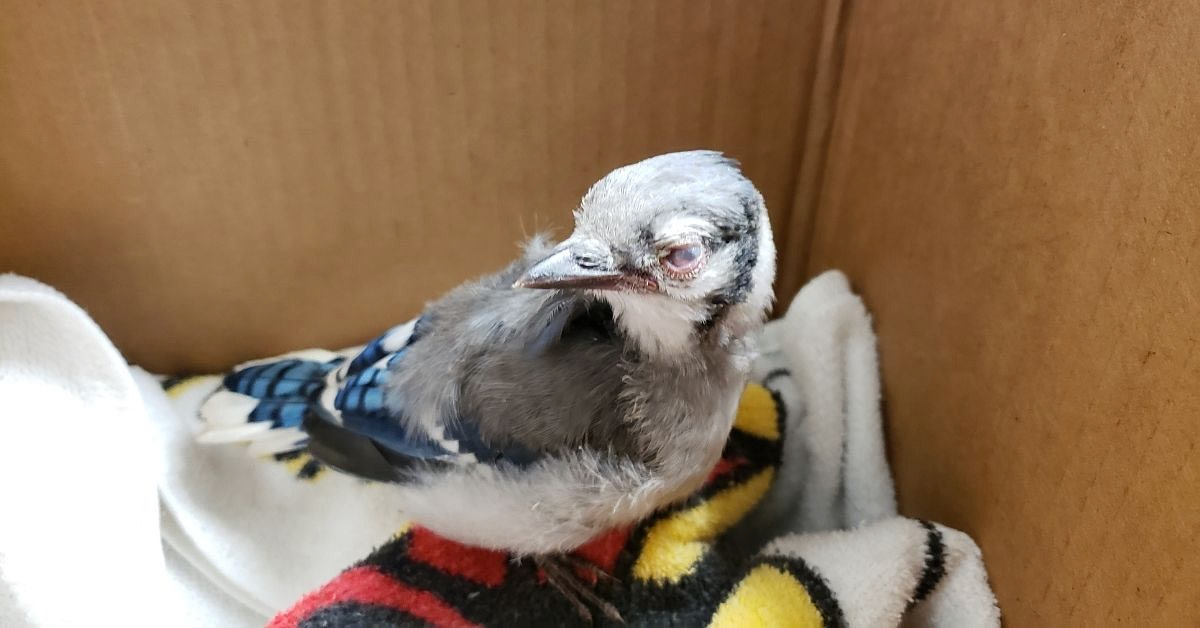
Thousands of diseased songbirds have been dropping dead from Appalachia to the Midwest for almost three months now. Apart from a few under-developed hypotheses, biologists remain mostly stumped as to why. Many hunters are concerned the ailment could spread to waterfowl or upland birds.
The mysterious illness first showed up in a bird delivered to Washington, D.C., wildlife rescue group City Wildlife on April 11, the group’s director Jim Monsma said in an interview with DCist. Wildlife managers have since detected the disease in Ohio, Virginia, West Virginia, Indiana, Maryland, and Kentucky. Residents have witnessed songbirds exhibiting symptoms that include swollen and crusty eyes, blindness, disorientation, bleeding from the mouth, shaking, and labored breathing. Death usually follows shortly after symptoms start.
“This is truly scary,” Monsma told DCist. “We don’t see the light at the end of the tunnel…and it’s just every day more and more birds.”
The affliction seems to be spreading rapidly. The number of counties reporting cases in Indiana shot up from 15 on June 25 to 40 on June 28. State wildlife agencies have opened sick and dying songbird portals on their websites to allow citizens to report sightings. The Kentucky Department of Wildlife estimated they’ve received 1,200 reports.
So far, the roster of species affected includes blue jays, house sparrows, northern flickers, northern mockingbirds, tufted titmice, gray catbirds, American robins, starlings, grackles, northern cardinals, and brown-headed cowbirds.
The U.S. Geological Survey, the National Park Service, and various state wildlife departments released an interagency statement on June 9 asking for the public to discontinue the use of birdfeeders and birdbaths in hopes of slowing the spread.
The Indiana Animal Disease Diagnostic Laboratory has ruled out both avian influenza and West Nile virus after conducting testing on infected birds, the Indiana Department of Natural Resources reported.
Some biologists have begun pointing fingers at the emergence of the Brood X Cicadas. Areas with lots of sick birds overlap with those that saw large concentrations of the 17-year hatch event. Many of the cicadas were also sick—a strange fungus is eating lots of the noisy bugs from the inside out.
“One of the guesses is a fungus called massospora. We don’t know whether the fungus could negatively impact the birds, so we’re exploring that as a potential cause,” Brian Evans, a bird ecologist at the Smithsonian Migratory Bird Center, said in an interview with NPR.
But cicadas could also be carrying pesticides that could poison the birds, despite state wildlife agency warnings to not treat for the bugs.
“Pesticides are, of course, a potential cause,” Evans said. “Cicadas have lived underground, right underneath us, for 17 years. And for those 17 years, they could have been accumulating toxins like pesticides or heavy metals that the birds could be exposed to at high concentrations, just because they’ve switched their diets over to cicadas.”
So far, only small- and medium-sized songbirds have been impacted by the mysterious illness. But could they be canaries in the coalmine for other bird species in the region, specifically waterfowl and upland game species, that also feed on the cicadas?
“We could guess that, due to the unusually wet spring and summer the East is experiencing, there is a bunch of runoff-associated crap floating around that may not be present in ‘normal’ years,” said MeatEater Conservation Director Ryan Callaghan. “Could this affect game birds in those areas? For sure. But will this spread like a disease or virus? Nothing currently points to that. It’s more than likely a localized event.”
This outbreak is one of many major bird mortality events in the last few decades. Perhaps the most recent instance occurred in September 2020, when yellow warblers literally fell from the skies above New Mexico by the thousands, victims of an aggressive and unexpected mid-migration cold snap. This event caused biologists to harken back to the 1904 bird die-off in Minnesota and Iowa, during which an intense snowstorm claimed 1.5 million avian lives.
This outbreak happens against the backdrop of a global bird population that is shrinking rapidly. In October 2019, the American Bird Conservancy released a report that slapped readers in the face with a terrifying statistic: The planet has lost 3 billion birds, or 29% of the global population, in just the last 50 years.
If the cicadas really are to blame for this most recent episode, we might not have much to worry about; the bugs will be gone again in a few weeks. But other threats like pesticides and polluted runoff aren’t going away anytime soon and have the potential to keep wreaking havoc.
“We know that birds can take a once-every-17-year hit on their populations,” Evans said. “But on the other hand, this could be the start of something else entirely.”
Feature image via Virginia Department of Wildlife Resources





